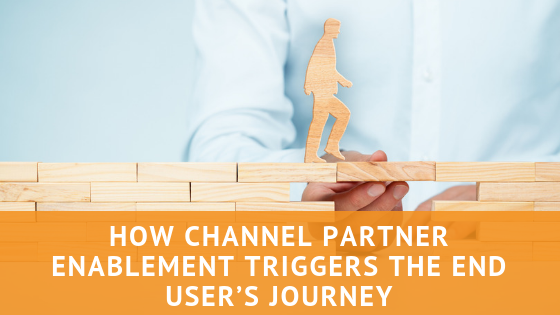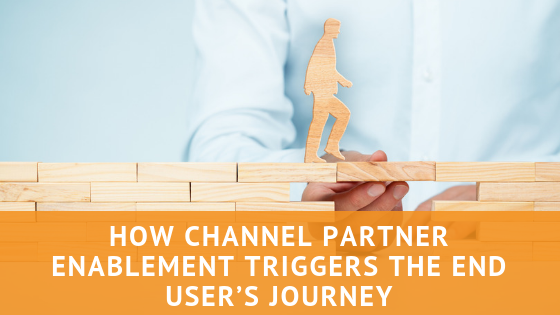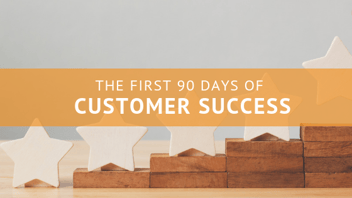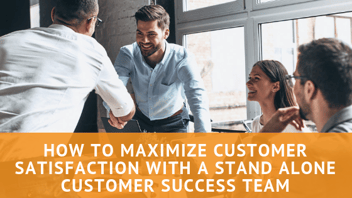
When you have a channel partner program, you need to rely on your channel partners to manage not only customer sales but also the overall customer experience. In the age of software as a service and recurring revenue models, everyone in the value chain has to assume responsibility for customer success. However, your channel partners are on the front line, since they closed the sale and are the first line of defense for customer fulfillment. Therefore, the vendor’s job is to enable channel partner success in order to optimize the customer’s experience.
In the bold new world of commitment to overall customer success, the vendor, the channel partner, and the customer each have unique roles, and their own definition of success. Customers expect a more personalized, custom experience. Channel partners need to stay relevant and sustain the customer relationship for ongoing success. The vendor is committed to delivering outcomes to customers, which puts greater pressure on the channel. What all these players have in common in their shared ecosystem, is a commitment and alignment to overall success.
When designing any channel partner program, it’s important to remember that channel partners are the fulcrum for customer success and go hand in hand with inside sales teams. Measuring partners’ success goes beyond traditional metrics such as sales revenue. The performance of today’s channel partners is measured in sales volume, customer implementation, consulting services, customer retention, and upselling—in other words, customer success.
As customers demand and expect more from their digital transformation solution providers, channel partners experience more pressure from end users and vendors to deliver more. For the channel partner program to succeed, it’s up to the vendor to enable their partners’ success. It is this enablement phase of the channel partner’s journey that triggers customer success.
The Channel Partner’s Journey
In many ways, the channel partner’s journey mirrors the customer’s journey. In the case of your channel partner program, the goal of the partner journey is to complete the first sale, and ultimately to enable customer success.
For the vendor, this means collaborating with the partner to develop and deliver the right solution for the end buyer. This requires the vendor to assist the partner with designing, building, testing, and implementing the right customer solution. Once the specified solution is up and successfully running in the end user’s environment, the channel partner moves into the Customer Success stage of the partner journey.
We like to think the partner’s journey has six steps:
-
Awareness: This is part of the Partner Acquisition phase, where vendors and channel partners identify mutual interests and determine that the vendor’s solution is a good fit for the partner’s portfolio.
-
Selection: The next step in Partner Acquisition is establishing a working relationship.
-
Onboarding: The third and final Partner Acquisition stage is onboarding. This is where vendor support should help channel partners gain momentum. Partners should be welcomed as part of the team with tools and resources, access to the partner portal, and an understanding of how the vendor’s solutions expand the partner’s portfolio.
-
Enablement: The first part of the Partner Retention phase, enablement is when the channel partner successfully completes their first customer engagement with support from the vendor. This is the proofing stage where knowledge transfer gives the partner the tools they need to thrive operationally.
-
Customer success: With vendor instruction and support comes the completion of the second part of the Partner Retention phase, enabling customer success teams. This is where the customer engagement goes into high gear, and the partner takes charge of successful solution implementation.
-
Renewal and scaling: This is the Partner Growth phase of the journey, where the channel partner builds on customer success to expand the current engagement and uses lessons learned to bring in new business.
It is during the enablement stage that the partner is ready to build the customer base on their own. With instruction and support from the vendor, the channel partner is now ready to assume responsibility for customer success, which means they have achieved their own partner success with a solution that has been successfully implemented and integrated into the customer’s infrastructure.
Tactics for Partner Enablement
As part of your partner channel team program, vendors need to have formalized processes and tools in place to promote partner success. Enabling partner success requires a variety of collaborative tactics. Here are just a few to consider:
-
Create a technical marketing plan that partners can apply to set up the customer’s infrastructure.
-
Create a test or demonstration environment to allow partners to show customers the solution and give them context for their own needs.
-
Provide sales engineer support when your channel partners have technical issues.
-
Help customize an onboarding experience that is guaranteed to give end customers more confidence and promote customer success.
-
Help deploy the solution in the end customer’s infrastructure.
-
Assist with hands-on support, including demonstrations and product information, until your channel partner starts generating revenue and is capable of managing customer success.
More than a simple knowledge transfer, your channel partner program needs to be structured as a success transfer program. Vendors need to nurture channel partners through every stage of partner success, preparing them to assume responsibility for customer success. With the right channel partner program, you can empower channel partners to assume full responsibility for the customer experience and have ongoing confidence that your channel partner program will continue to deliver the results you want.








